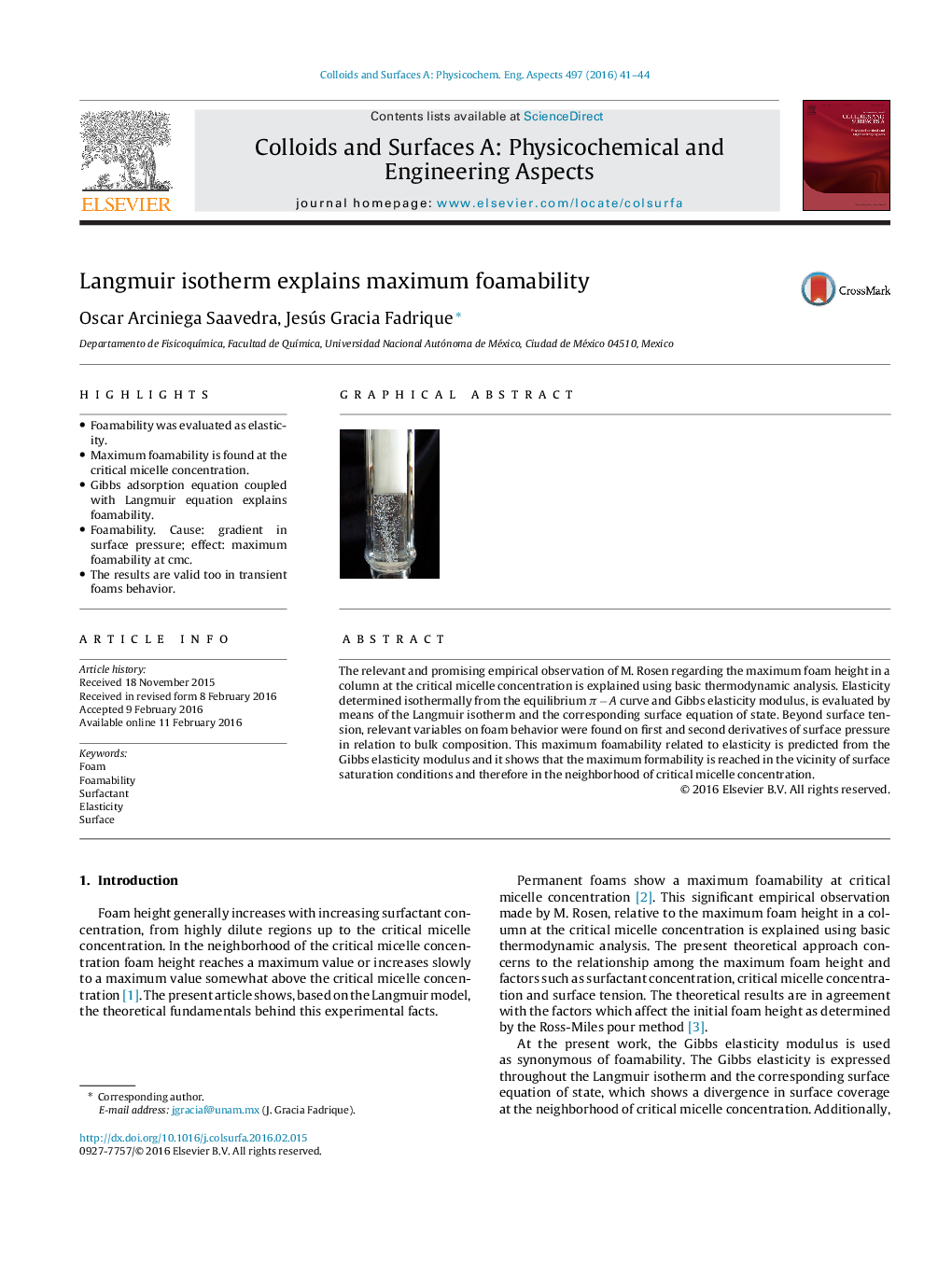| Article ID | Journal | Published Year | Pages | File Type |
|---|---|---|---|---|
| 591686 | Colloids and Surfaces A: Physicochemical and Engineering Aspects | 2016 | 4 Pages |
•Foamability was evaluated as elasticity.•Maximum foamability is found at the critical micelle concentration.•Gibbs adsorption equation coupled with Langmuir equation explains foamability.•Foamability. Cause: gradient in surface pressure; effect: maximum foamability at cmc.•The results are valid too in transient foams behavior.
The relevant and promising empirical observation of M. Rosen regarding the maximum foam height in a column at the critical micelle concentration is explained using basic thermodynamic analysis. Elasticity determined isothermally from the equilibrium π − A curve and Gibbs elasticity modulus, is evaluated by means of the Langmuir isotherm and the corresponding surface equation of state. Beyond surface tension, relevant variables on foam behavior were found on first and second derivatives of surface pressure in relation to bulk composition. This maximum foamability related to elasticity is predicted from the Gibbs elasticity modulus and it shows that the maximum formability is reached in the vicinity of surface saturation conditions and therefore in the neighborhood of critical micelle concentration.
Graphical abstractFigure optionsDownload full-size imageDownload as PowerPoint slide
